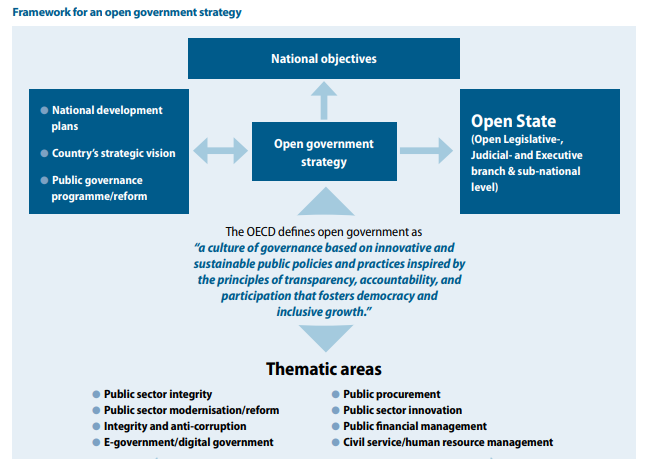Open government for dummies: Open State
What is Open State and its implications? We examine Open State model that seeks to include the pillars of Open Government in the judicial and legislative branches.
Available in:

By Laura Tamia Ortiz. Published: July 28, 2021.
We have reviewed the concept of Open Government and its main pillars (transparency, participation, accountability, and open data). We have an overview of what it is, why it is important, and what it can be used for. In this article, we are going to review another closely related governance model: the Open State.
Let’s briefly recall what Open Government is. The OECD Council Recommendation defines it as “a culture of governance that promotes the principles of transparency, integrity, accountability and stakeholder participation in support of democracy and inclusive growth”. In the same line are positioned the Open Government Partnership (OGP) and other international bodies, which include nuances to this definition that you can read in our post: Open Government for dummies: why is an open government important?. Since 2011 the concept and movement for its implementation have consolidated in the executive branch. However, it has left aside subnational governments, the legislative branch, and the judiciary. Thus, from the need to incorporate all power branches and levels of government, the open state was born.
What is Open State?
The Open State emerges as an evolution of Open Government that seeks its integral incorporation in all public administration bodies. The OECD points it out as the sum of Open Government, Open Justice, and Open Parliament (OECD, 2018). Along with other international organizations, it recognizes that this notion accounts for a form of transparent, multidirectional, collaborative, and citizen participation-oriented relationship or governance in both monitoring and public decision-making, from whose platform or space for action it is possible to catalyze, articulate, and create public value from and beyond the borders of state bureaucracy (Ramírez-Alujas, 2011).

Source: OECD, 2016. Open Government. The global context and the way forward.
Oszlak, one of the current recognized Latin American theorists on the subject, proposed in 2017 that the concept and its implications should go further. If it only includes the areas proposed by the OECD, other extra-state or parastatal institutional instances would be left out, which should also make their management transparent and open since they use public resources or state subsidies. That includes the cases of companies with state participation, public-private ventures, foundations, beneficiaries of promotional schemes, subsidized public services, and the like.
The open state implies carrying out actions with an inclusive approach and requires coordination of the state and its powers with society. In other words, it is based on the need for constant dialogue and multidirectional trust between different actors, including civil servants and users of state services. If properly implemented, it allows discussing and devising new forms of collaboration and synergies to incorporate the needs and proposals of the different populations and sectors that interact with public institutions, in their broadest form, in decision making.
It involves great challenges of integration and articulation and the appropriation and effective use of the instruments of transparency, participation, innovation, and accountability, by public officials and citizens accustomed to closed and conservative environments in their forms. This model considers that the different branches of government must guarantee their independence but invites a more active and transparent interaction. It seeks to generate State policies that improve trust and bring the State closer to citizens.
Some examples of actions carried out by the legislative and judicial branches may be the approval of whistleblower protection laws, the opening of two-way communication channels to bring political decisions closer to citizens, translation of laws into a more accessible language or native languages, offline campaigns to bring justice and parliament closer to those who do not have access to digital tools, or the simplification of procedures, with a citizen-centered approach.
Watch the Webinar organized by Directorio Legislativo and Open Parliament, with representatives from Georgia, Canada, Sierra Leone, Paraguay, and OGP. They discussed how governments and parliaments work to generate Open State policies.
Links of reference
If you want to know more about this topic, we invite you to subscribe to our Open Government Newsletter, you will receive the most relevant news twice a month, and to read the reference links




